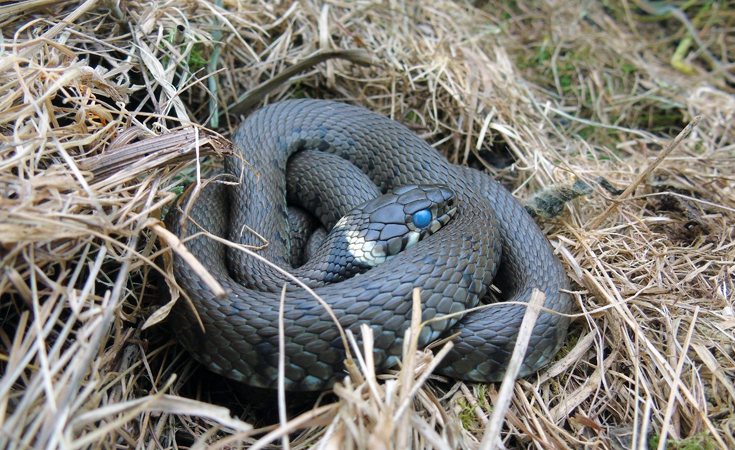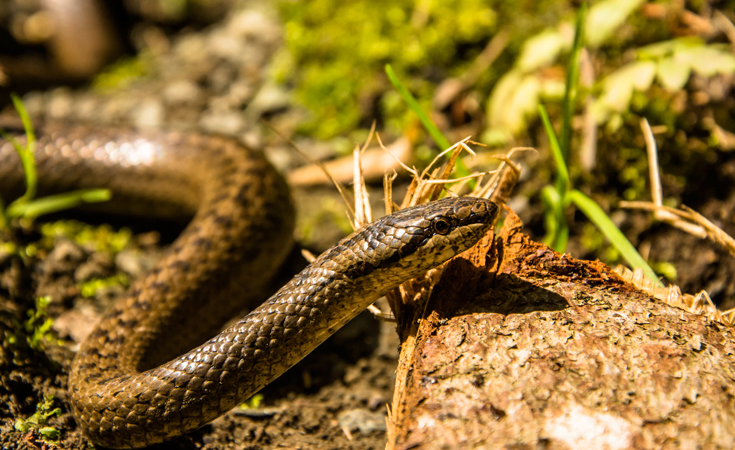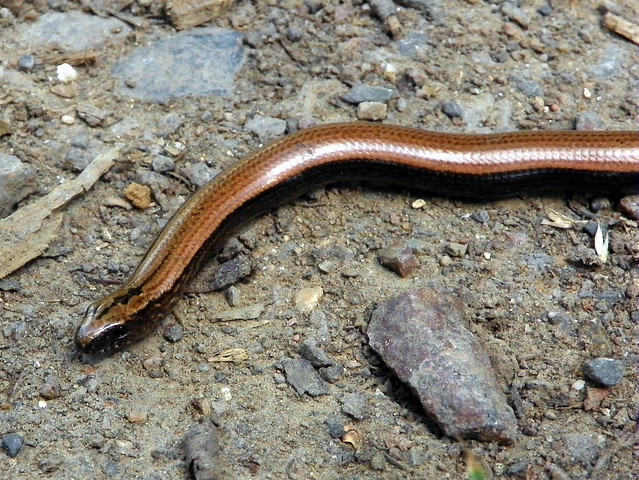Today, we’re talking about the UK species of snakes and how they’re threatened by many of the same issues that affect a range of wildlife.
From habitat loss and fragmentation, to road mortality, climate change and disease. Sadly, snakes in the UK suffer the same fate as many other protected species. But the biggest barrier to conserving these somewhat elusive but important creatures, are the persecution and negative attitudes toward them.
It’s true that snakes get a bad rap, but here at Thomson we work on all sorts of developments, small and large, and help spread our knowledge of snakes and how our clients can mitigate any harm to them and their habitats, thus helping prevent businesses from sliding down the legal ladders (sorry, bad snake pun).
For starters, we’ve put some key ecological facts together on the UK’s snakes and we’ve even thrown in a little wild card as well, just to test you. So, sit back and wrap your brains around the facts and let us charm you.
Grass snake (Natrix natrix)

- The grass snake is Britain’s largest terrestrial reptile and the only egg-laying snake.
- Grass snakes can live for up to 15 years.
- Hatchling snakes escape from the eggs by chipping at the shell with an egg tooth, which is lost shortly after hatching.
- Well adapted swimmers, grass snakes are able to stay submerged for over half an hour.
- Relying on wariness for protection, the grass snake often ‘plays dead’ when threatened, which may dissuade certain predators from killing it.
- When caught, the grass snake hisses loudly, releases pungent and foul-smelling substances from the anal gland, and will frequently strike with the head, although it does not bite.
Adder (Vipera berus)

- The adder is the only venomous snake native to Britain.
- Unlike most reptiles, adders do not lay eggs. Young snakes are born about the size and shape of an earthworm.
- Litters range in size from three to 20, and the young stay with their mothers for a few days.
- Unusually for snakes, the sexes are possible to tell apart by the colour. Females are usually brownish in hue with dark-brown markings, and the males are grey with black markings.
- During the mating season, males engage in combat known as the ‘adder dance’. Rivals will raise the front of their bodies vertically and make swaying movements and attempt to push one another to the ground.
- Relatively speaking, adder bites are not highly dangerous. In Britain there have been only 14 known fatalities since 1876.
Smooth snake (Coronella austriaca)

- Great Britain’s rarest native reptile, the smooth snake, is restricted to dry heath-land habitats in the south of England.
- Smooth snakes are oviparous. Meaning that juveniles hatch out of eggs internally and are born live.
- Juveniles feed almost exclusively on other reptiles, often taking prey almost twice their own size.
- The scales of the smooth snake are not keeled (ridged along the centre of the scale) like those of adders and grass snakes, and may be used to identify a shed skin.
Slow worm (Anguis fragilis) – worm, snake or lizard?

When it comes to the slow worm, there is, however, an elephant in the room – or reptile in the room for that matter. Contrary to popular belief, and despite having the hallmarks of the snake family, the slow worm is not a snake at all, and nor is it a worm, as its name suggests. It is in fact a legless lizard.
In England, Scotland and Wales, grass snake, common lizard, slow worm and adder are all protected by the Wildlife and Countryside Act 1981 (as amended) from intentional killing, injury and selling. Mitigation of any potential negative effects on these species is, however, not subject to the European Protected Species Licensing process, as this only applies to smooth snakes and sand lizards.
There’s a snake on my site, what am I going to do?
If you think your site may have snakes, slow worms, or any reptiles for that matter, then get in touch with the ecology experts. Thomson ecologists can advise you on your next steps, usually a preliminary ecological appraisal and then, where appropriate, reptile surveys and any mitigation measures.











